
 |
CULTURE |
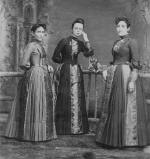 |
1880s Literary societies, churches, lodges, bands and orchestras, and plays and musicals soon flourished. The frontier town began to be polished. Schools were a major factor as music, art and drama were taught in addition to the three R's. Here is a trio of teachers, ambassadors of culture, in fashionable attire. |
|
|
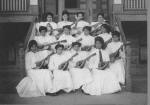 |
1890s The Grand Junction Indian School educated Native Americans from 1886 - 1911. It was informally called the Teller Institute for Congressman Henry M. Teller, who promoted the enabling legislation in Congress. This scene is a string band of mandolin and guitar players. The students had various bands, orchestras, and athletic teams. These students are wearing fashionable blouses called shirtwaists, and summer weight skirts of white with eyelets. |
|
|
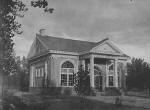 |
1900s The Women�s Library Association petitioned philanthropist Andrew Carnegie for funds to build a new library, which was erected in 1901 at 7th and Grand. A substantial �Colonial� building, it had a red sandstone foundation, buff brick walls, a red tile roof, and furniture and woodwork of golden oak. (Dean Photo) |
|
|
|
|
 |
1920s Suffragettes were the feminists of their time. They campaigned for the right of women to vote, and the 19th Amendment of the Constitution gave them the vote nationally, beginning with the 1920 election. Women had voted in Colorado since 1893 because state law assured them that right, but local women were elated that the privilege now was policy in all the states. |
|
|
|
|
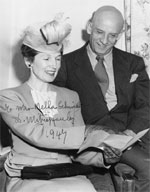 |
1940s The very successful Columbia Concert Series began in 1944, and still continues at the Mesa County Community Concert Association. Many outstanding musicians, and occasionally theater and dance troops, appear during the annual season. Mrs. Melba Schmidt was a founder, and the president for 15 years. With her is Dimitri Mitropolulos, celebrated conductor of the Minneapolis Symphony who performed here in 1947. |
|
|
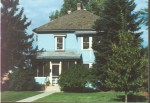 |
1950s Artist groups had long planned for an arts center. The Western Colorado Center for the Arts dates from 1953 when the Mesa County Arts Center Board was incorporated. They bought a building near 7th and Orchard (pictured), and opened it in 1960. A hexagonal building was added in 1970, and there have been further additions. By the 1990s art instruction and exhibits in the galleries were provided year around, and the auditorium hosted music, drama and dance. (Frank Bering Photo) |
|
|
|
|
 |
1970s The Grand Junction Musical Arts Association was formed to promote orchestras, opera and dance. The Mesa College Orchestra came under its wing and was reorganized as the Grand Junction Symphony. The first season was 1978-1979. A full season of classic concerts is offered, as well as pops and children�s concerts. The Nutcracker Ballet is a December symphony tradition. (Photo courtesy Grand Junction Musical Arts Association) |
|
|
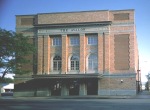 |
1980s
In the late 1940s, the Avalon Theatre had its facade remade in a simple,
modern mode during a radical interior and exterior remodeling. It was
renamed the Cooper. The facade has been rebuilt in its original style.
This 1996 photo shows the restored Avalon with its new/old face. Other downtown
buildings also are being restored to their historic appearance. |
|
|
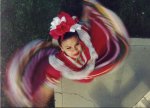 |
1990s
The ethnic
heritage of citizens began to be more widely appreciated. The downtown
shopping park is the setting for the Latino Cinco de Mayo celebration, and
the German Oktoberfest. Music, arts, crafts, dancing and ethnic foods are
there in abundance for the crowds. Italians, Blacks, Basques, Scandinavians,
and the many Celtic groups also have organizations and festivals. |
|
|
|
|
|
|
If you have
arrived at this page from a search engine |
|